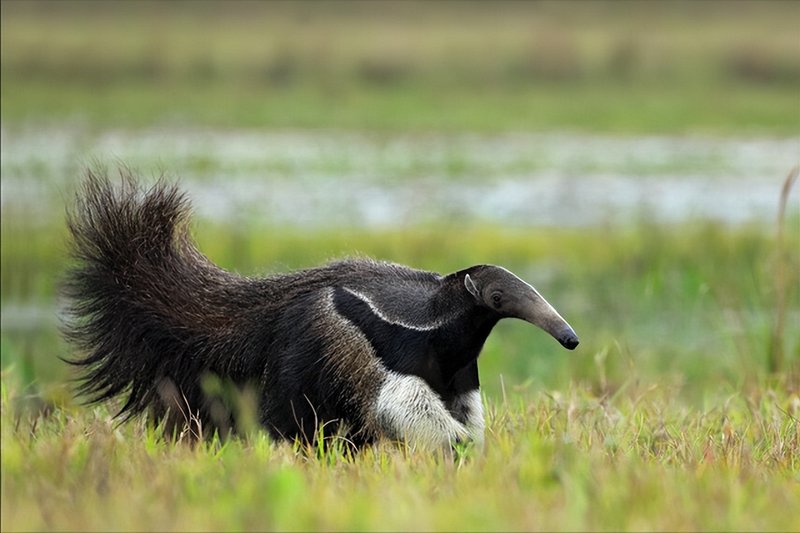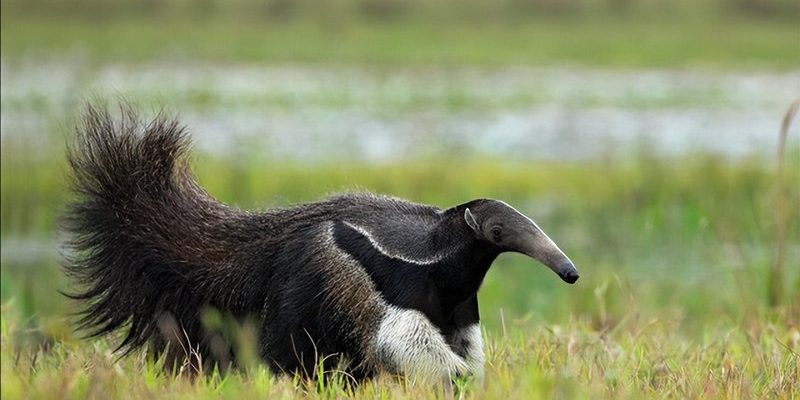
Giant anteaters have many unique traits that help them adapt to their environment. They depend on their keen senses and behaviors to survive, even if they’re not solving puzzles like a parrot might. So, let’s dive into the world of giant anteaters and unlock the mystery of their intelligence. You might find it’s a little more complex than you thought!
What Makes Giant Anteaters Unique?
To understand the intelligence of giant anteaters, it helps to know a bit about what they are and how they live. These animals are large, long-nosed creatures native to Central and South America. They can weigh up to 140 pounds and reach lengths of over six feet, including their long tails!
Giant anteaters are primarily known for their diet of ants and termites. Their specialized snouts and long tongues allow them to probe deep into mounds to extract their favorite snacks. This brings us to one of their outstanding traits: adaptability. They have evolved to thrive in various habitats, from grasslands to rainforests. Their need to find food in diverse environments shows a level of resourcefulness and problem-solving ability.
You might be wondering how this connects to intelligence. Well, being adaptable often requires a certain level of cognitive awareness. The ability to learn and adjust to new challenges is a sign of a clever animal. Giant anteaters might not be taking IQ tests, but their survival skills speak volumes about their brains.
The Role of Senses in Cognitive Abilities
Unlike some animals that rely heavily on vision, giant anteaters depend on their sense of smell. Their long snouts house a highly specialized olfactory system. This means they can sniff out food buried underground or detect predators lurking nearby.
This keen sense of smell is not just for finding snacks; it also plays a crucial part in their communication with other anteaters. They leave scent markings to communicate territory and mating availability. This kind of social behavior hints at a level of social intelligence, as it requires them to understand and navigate their social landscape carefully.
You might say their scent communication is like having a secret language! Imagine walking into a room and knowing who’s there simply by the scents lingering in the air. That’s how giant anteaters operate, relying on their noses to interact with their world.
Problem-Solving Skills and Learning
Giant anteaters exhibit some interesting problem-solving skills, especially when it comes to food. For instance, if they encounter a particularly tough termite mound, they may use their sharp claws to dig in or find another way around it. This demonstrates their ability to think critically about their environment.
In captivity, observations of giant anteaters show that they can learn new tasks, especially when it involves food rewards. For example, they can learn how to manipulate objects to get to their favorite treats. This aspect of learning is a significant indicator of intelligence in many animals.
Think about it: if you had to figure out how to open a jar to get a cookie, wouldn’t you try different ways until you found one that worked? Giant anteaters do something similar when exploring their surroundings. They might try several methods until they find the best solution, showing their cleverness in action.
Social Behavior and Interaction
When it comes to social interactions, giant anteaters lead mostly solitary lives. However, they do come together during the mating season. Their limited social structure means they often rely on their critical thinking and adaptability to navigate interactions with other animals.
While they’re not social butterflies, their solitary behavior doesn’t mean they lack social skills. They communicate through body language and scent marking, which plays a critical role in how they interact with potential mates or rivals. This ability to communicate suggests that they possess a degree of social intelligence, even in a more restrained social environment.
It’s a bit like being in a coffee shop where you sit alone but occasionally glance up to see who walks in. You recognize faces and understand who might be friendly or who to avoid. That’s the kind of awareness giant anteaters show in their interactions.
Challenges and Risks to Their Intelligence
Despite their fascinating abilities, giant anteaters face significant challenges that can impact their cognitive skills. Habitat loss due to deforestation and urban development places them at risk. When their environments change, it can be hard for them to adapt. As a result, their problem-solving skills may become less effective if they’re faced with unfamiliar environments.
Moreover, road traffic can pose a deadly threat to these animals, affecting their population and, consequently, their social structures. Fewer numbers can lead to decreased opportunities for learning and passing on knowledge to younger generations. This cycle can limit the overall intellectual growth of the species.
In a way, it’s like trying to learn in a noisy classroom where you can’t hear the teacher. If giant anteaters are constantly facing danger or disruption, their natural instincts and learned behaviors may not develop as fully as they should.
So, how smart is a giant anteater? They may not be solving complex problems like some other animals, but they certainly display significant cognitive abilities. Their keen sense of smell, problem-solving skills, and unique way of interacting with their environment all suggest a surprisingly rich mental world.
While they might lead solitary lives, their intelligence shines through their adaptability and communication skills. As we learn more about these fascinating creatures, it’s essential to recognize the vital role they play in their ecosystems and the challenges they face in our changing world.
By appreciating the intelligence of giant anteaters, we can better understand their needs and work towards ensuring their survival. After all, every species, big or small, has its part to play in the grand tapestry of life. So next time you hear about giant anteaters, remember: they are more than meets the eye—they are indeed quite smart!

